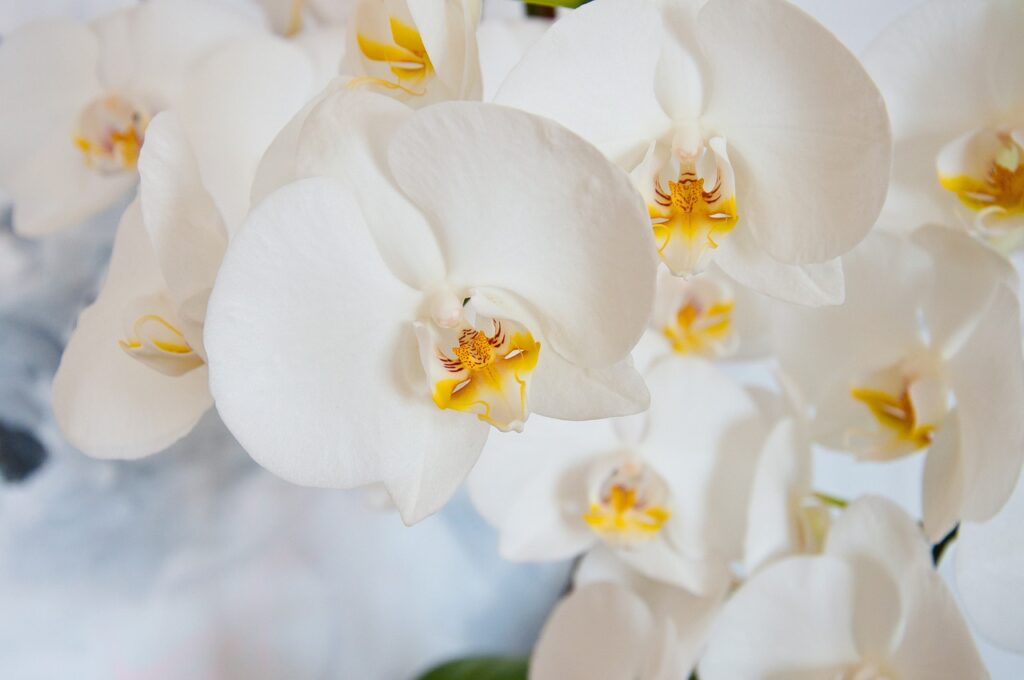Orchids are a diverse and widespread group of flowering plants that are known for their beautiful and often fragrant blooms. In this article, we will explore the world of orchids, from their various types and species to their history, uses and benefits, symbolism, planting, care, and interesting facts.

General Information
Orchids are plants that belong to the family Orchidaceae, which is one of the largest families of flowering plants in the world. They are known for their unique structures and diverse range of species, which are found in many different habitats around the world. Orchids have bilateral symmetry, meaning that they have a distinct front and back, and most have three sepals and three petals, although some have modified petals called a labellum.
Types, Species, and Hybrids
There are over 22,000 species of orchids, and they are divided into nearly 1,000 genera. Some of the most common orchid genera include Cattleya, Cymbidium, Vanda, and Laelia, which are often used in commercial ornamental trade. Orchids can be terrestrial, meaning they grow in soil, or epiphytic, meaning they grow on other plants. Some orchids, such as Corallorhiza (coralroot orchids), lack leaves altogether and instead use specialized fungi to obtain nutrients.
History
Orchids have a rich history that dates back thousands of years. They were first cultivated in ancient China and were later introduced to Europe in the 16th century. Orchids have been used for various purposes throughout history, including as medicinal plants, food sources, and ornamental plants. In the 19th century, orchids became popular as exotic and rare plants among wealthy collectors, and orchid societies were established to encourage cultivation and conservation.
Uses and Benefits
Orchids have many uses and benefits, including:
- Ornamental Use: Orchids are grown for their beautiful flowers, which are often used in bouquets, arrangements, and as landscape plants.
- Medicinal Use: Some orchids have medicinal properties and are used to treat a variety of ailments, such as fever and pain.
- Food and Beverages: Some orchids, such as vanilla, are used as flavorings in food and beverages.
- Fragrance: The scent of orchids is often used in perfumes and other fragrance products.
- Conservation: Orchids are important indicators of ecosystem health and are often used in conservation efforts to protect habitats and endangered species.
Symbolism
Orchids have many symbolic meanings, including:
- Luxury and Elegance: Orchids are often associated with luxury and elegance, and are used as symbols of wealth and refinement.
- Love and Romance: Orchids are often given as gifts to express love and affection.
- Strength and Resilience: Orchids are often used as symbols of strength and resilience, as they are able to grow in a wide range of habitats and can survive in harsh conditions.
Planting and Care
Orchids require specific growing conditions, depending on their species and habitat. Here are some general tips for planting and caring for orchids:
- Choose the Right Location: Orchids need bright, indirect light and good air circulation.
- Use the Right Potting Mix: Orchids need a potting mix that is well-draining and high in organic matter.
- Water Correctly: Orchids need regular watering, but too much water can be harmful. Use a watering schedule that is appropriate for your orchid species.
- Fertilize Appropriately: Orchids need regular fertilization, but too much fertilizer can be harmful. Use a fertilizer that is appropriate for your orchid species.
- Prune and Repot as Needed: Orchids may need to be pruned or repotted to promote new growth and prevent disease.
Facts/Trivia
- Orchids have been used in traditional medicine for thousands of years.
- The largest orchid species in the world is the Rhynchostylis gigantea, which can grow up to 30 feet tall.
- Orchids are the national flower of Colombia.
Conclusion
Orchids are a fascinating and diverse group of plants that have captured the imaginations of people around the world for centuries. Whether you are a gardener, a nature lover, or just someone who appreciates beauty, there is something about orchids that will captivate you. By understanding the different types of orchids, their uses and benefits, and how to care for them, you can enjoy these beautiful plants in your own home or garden.
FAQs
- How do I identify an orchid species? To identify an orchid species, you will need to look at its leaves, flowers, and other characteristics, such as its habitat and growing conditions. You can also consult a field guide or consult with a botanist or horticulturist.
- How do I care for an orchid? To care for an orchid, you will need to provide it with the right growing conditions, such as light, temperature, and humidity. You will also need to water and fertilize it appropriately, and may need to prune or repot it as needed.
- What are some common orchid pests and diseases? Some common orchid pests and diseases include mealybugs, scale insects, and root rot. To prevent these problems, you should keep your orchid clean and healthy, and use appropriate pest control methods if necessary.
- How can I help conserve orchids? To help conserve orchids, you can support conservation efforts and organizations, such as orchid societies and botanical gardens. You can also avoid buying orchids that are illegally harvested or traded, and support sustainable orchid cultivation practices.
